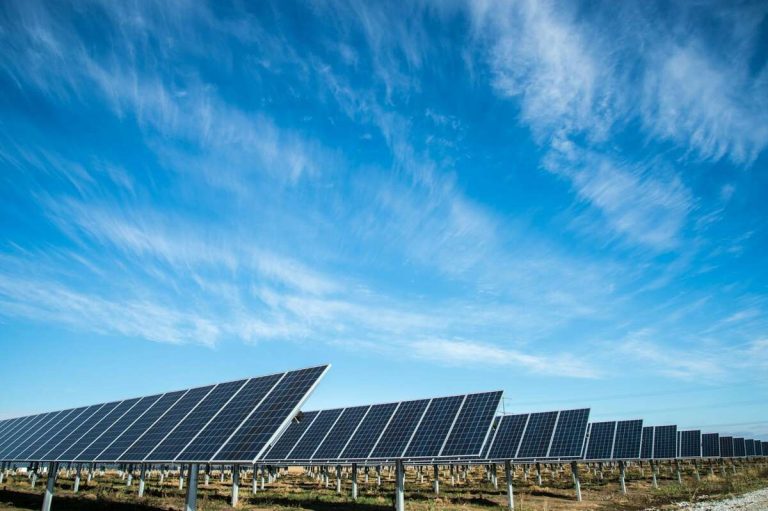2024 will see dramatic changes in home design and real estate, marked by the convergence of sustainability and technology. These trends will reimagine modern living spaces, influence architecture and interior design choices, and set new expectations for home buyers and sellers. Understanding these trends is essential for energy professionals, as they reflect homeowners' changing tastes and priorities.
Smart Home Technology
The integration of smart technology is one of the biggest trends in the housing industry in 2024. The industry is expected to reach a value of $154.4 billion in 2024. Advancements in the Internet of Things (IoT) and artificial intelligence (AI) have made smart thermostats, lighting systems, and appliances essential to the modern home.
Smart Energy Management Systems (EMS) are at the forefront of smart home technology. These systems bring together various smart devices into one unified network to monitor and optimize energy usage. Developing an EMS that seamlessly integrates with multiple devices and platforms ensures broad compatibility and user adoption.
This trend highlights the importance of developing interoperable, user-friendly energy management systems that blend with these smart technologies. The ability to optimize energy usage through real-time data and machine learning algorithms translates into significant efficiency gains and cost savings for consumers.
Sustainable materials and design
There has been a significant increase in the use of sustainable building materials in new build and renovation projects. Materials such as cross-laminated timber, recycled steel, bamboo, low-emission concrete and high-performance insulation are environmentally friendly options that improve the insulation performance of your home.
Older homes tend to be less environmentally friendly than newer ones. For example, older roof shingles are more likely to develop gaps and cracks, allowing air to get in and putting strain on HVAC systems. As roofs reach the end of their life, homeowners replace them with modern, sustainable alternatives. Modern shingles are more effective at regulating indoor temperatures, which means less energy consumption and reduced utility bills.
Energy professionals must encourage and support the adoption of these materials and develop new innovations that push the boundaries of energy efficiency. Additionally, understanding the life cycle energy impacts of these materials can improve decision-making in construction operations.
Renewable Energy Integration
About 5% of American households relied on renewable energy as their primary source of power in 2020. Homeowners are investing in solar panels, wind turbines, and even geothermal heating systems to reduce their carbon footprint and realize long-term cost savings.
The transition to renewable power requires experts with a thorough understanding of these technologies and the ability to design systems that blend in with existing residential infrastructure. Experts must provide comprehensive solutions that include site assessments, system design, installation, and maintenance services to ensure optimal performance and customer satisfaction.
Energy storage solutions are also on the rise. Effective solutions such as home battery systems are essential to address the intermittent nature of renewable energy. Combining these installations with robust storage options can provide homeowners with greater independence and resilience, especially in areas prone to power outages or where grid connections are unstable. Professionals must stay up to date with the latest developments in battery technology to provide systems that offer reliable, efficient, and scalable energy storage.
Energy-saving appliances
Nearly half of U.S. households use Energy Star certified appliances, and more than 500 million Energy Star certified light bulbs were sold in 2021 alone. To become Energy Star certified, products and construction projects must meet strict requirements and have an energy efficiency rating that exceeds at least 75% of similar construction in the United States.
Homeowners are increasingly prioritizing appliances that boast high energy efficiency ratings, such as certified refrigerators, washing machines, dishwashers, and HVAC systems. These appliances are designed to operate on significantly less electricity while performing the same functions as traditional appliances.
This trend highlights the importance of promoting and encouraging the adoption of these advanced appliances. By touting the benefits of these appliances, including lower utility bills, reduced environmental impact, and potential incentives and rebates, energy professionals can help homeowners make informed decisions that align with their sustainability goals.
Changing homeowner behavior and the implications for energy professionals
Significant changes in homeowner behavior are occurring around sustainable living and technology integration. These changes are having a profound impact, shaping demand for green homes and influencing efficiency-focused renovation decisions. Understanding these changes is critical to tailoring our services to homeowners' changing needs and preferences.
Conscious Consumerism
Consumers are becoming increasingly conscious of the impact of their spending habits and purchasing choices. Younger generations in particular are prioritizing the planet when making purchasing decisions: Two-thirds of consumers cite environmental considerations as one of the top five factors behind their purchasing habits.
This shift is driving demand for green energy solutions and greener living habits. Professionals must recognize this shift and adjust their offerings to meet the expectations of environmentally conscious consumers. This includes offering renewable power installations and educating homeowners on the environmental impact of their choices.
The demand for energy independence
Unreliable power grids around the world have homeowners seeking independence from their national power supply. While the U.S. national power grid boasts 99.95% reliability, natural disasters and distribution issues can cause blackouts and extended outages. Many homeowners want to reduce their reliance on the power grid by investing in renewable energy and energy storage systems.
This trend highlights the importance of offering solutions that enhance self-sufficiency, such as solar panels combined with home battery systems. By focusing on technologies that enable homeowners to generate, store and manage energy, experts can respond to the growing preference for independence and reliance on energy supplies.
Stay up to date in a changing market
Home energy trends for 2024 highlight the importance of adapting to consumer needs and paying attention to them as they become more important. Energy professionals must prioritize their customers' interests in providing sustainable energy. Understanding these changes will position them as leaders in the home energy industry and make their companies more future-proof.

